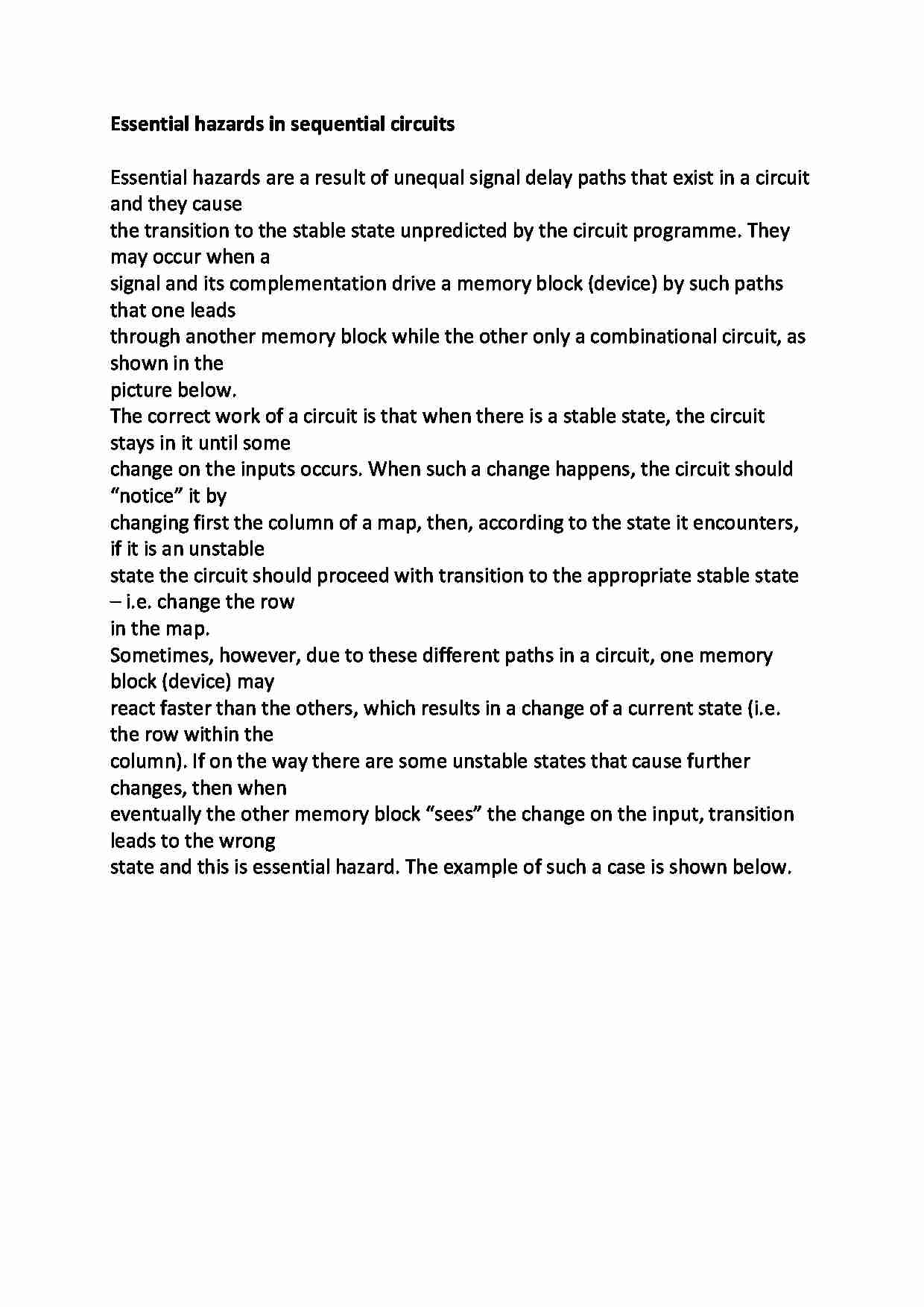
Essential hazards in sequential circuits Essential hazards are a result of unequal signal delay paths that exist in a circuit and they cause
the transition to the stable state unpredicted by the circuit programme. They may occur when a
signal and its complementation drive a memory block (device) by such paths that one leads
through another memory block while the other only a combinational circuit, as shown in the
picture below.
The correct work of a circuit is that when there is a stable state, the circuit stays in it until some
change on the inputs occurs. When such a change happens, the circuit should “notice” it by
changing first the column of a map, then, according to the state it encounters, if it is an unstable
state the circuit should proceed with transition to the appropriate stable state - i.e. change the row
in the map.
Sometimes, however, due to these different paths in a circuit, one memory block (device) may
react faster than the others, which results in a change of a current state (i.e. the row within the
column). If on the way there are some unstable states that cause further changes, then when
eventually the other memory block “sees” the change on the input, transition leads to the wrong
state and this is essential hazard. The example of such a case is shown below.
... zobacz całą notatkę



Komentarze użytkowników (0)